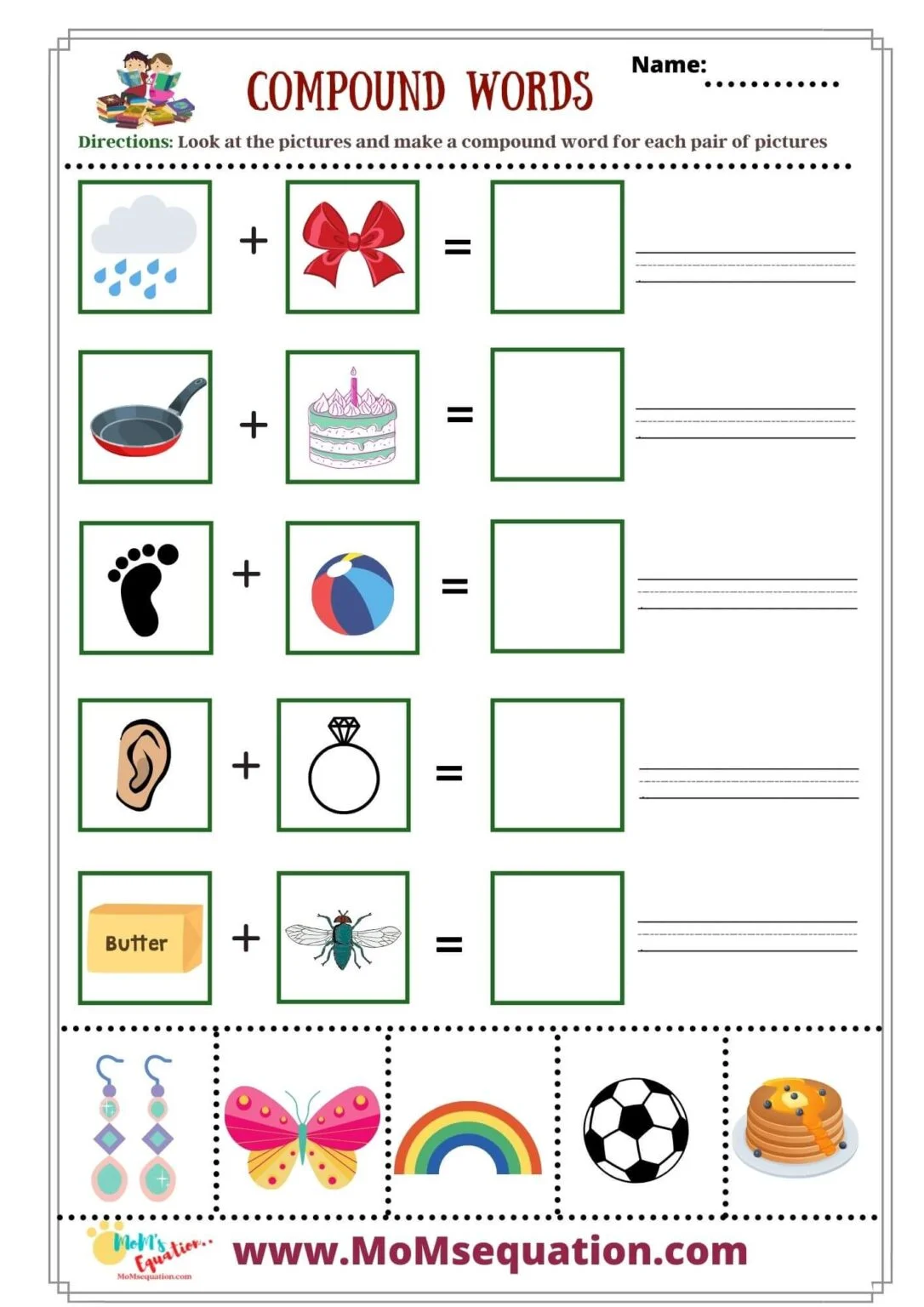
Mastering Word Fusion: The Indispensable Role of Compound Words Worksheets
In the intricate tapestry of the English language, compound words stand out as fascinating linguistic creations. They are formed when two or more words are joined together to create a new word with a distinct meaning. From "sunflower" to "firefighter," these words enrich our vocabulary, enhance our communication, and offer a unique window into the mechanics of language. For educators, parents, and language learners alike, understanding and mastering compound words is a crucial step in developing strong literacy skills. This is precisely where compound words worksheets become an invaluable resource, providing structured practice and reinforcing comprehension in an engaging manner.
What Are Compound Words? A Brief Overview
Before delving into the power of worksheets, it’s essential to grasp the fundamental concept of compound words. Essentially, they are two or more words combined to form a single, new word. Their meaning is often, but not always, related to the meanings of the individual words. For instance, "sun" + "flower" equals "sunflower," a flower that turns its face towards the sun. However, "butter" + "fly" equals "butterfly," an insect, whose meaning isn’t directly derived from its components.
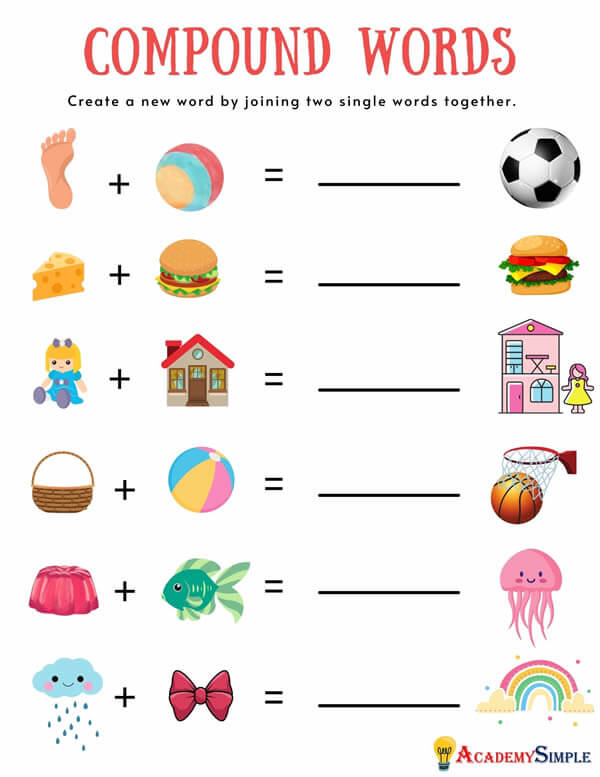
Compound words can be categorized into three main types:
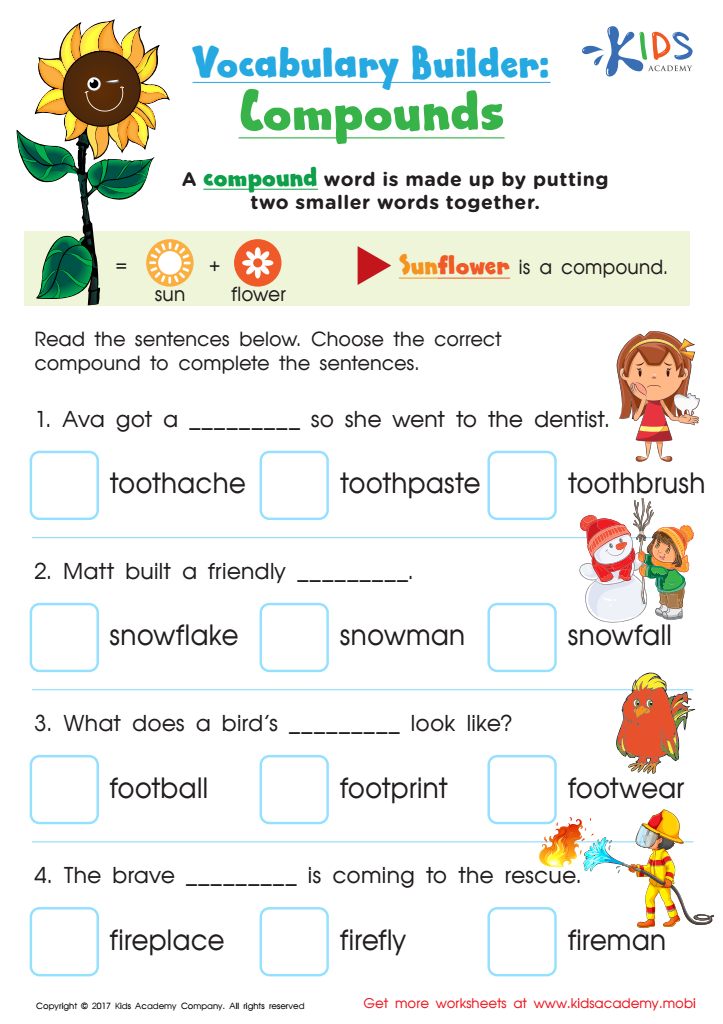
- Closed Compound Words: These are formed when two words are joined together without a space or hyphen, creating a single word. Examples include "bedroom," "footprint," "raincoat," "notebook," and "playground." These are often the primary focus of introductory compound words worksheets.
- Hyphenated Compound Words: These words use a hyphen to connect the two words. They often act as adjectives or adverbs. Examples include "well-being," "long-term," "mother-in-law," "part-time," and "up-to-date."
- Open Compound Words: In this type, the two words remain separate but function together as a single conceptual unit. Examples include "ice cream," "full moon," "high school," "living room," and "real estate."
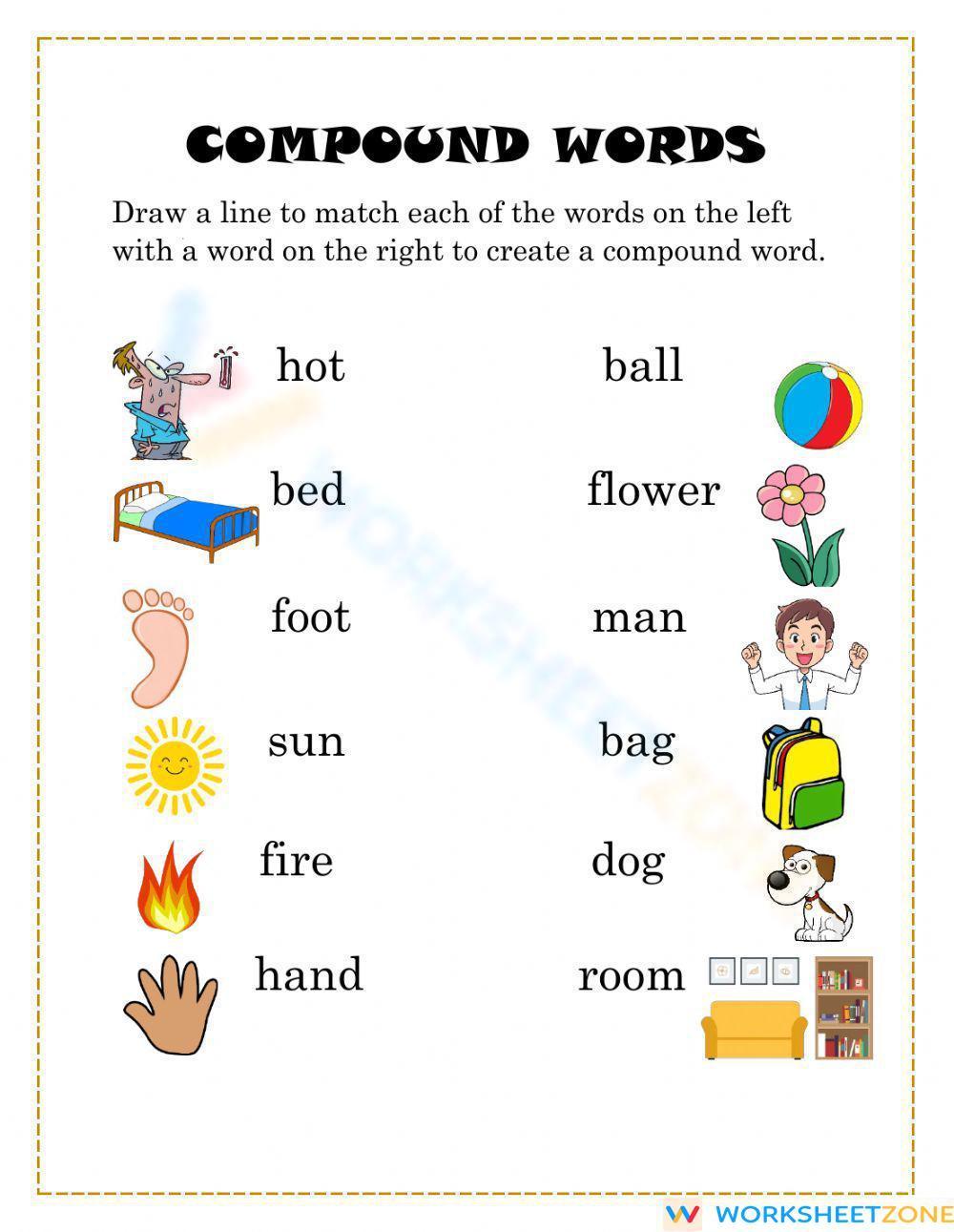
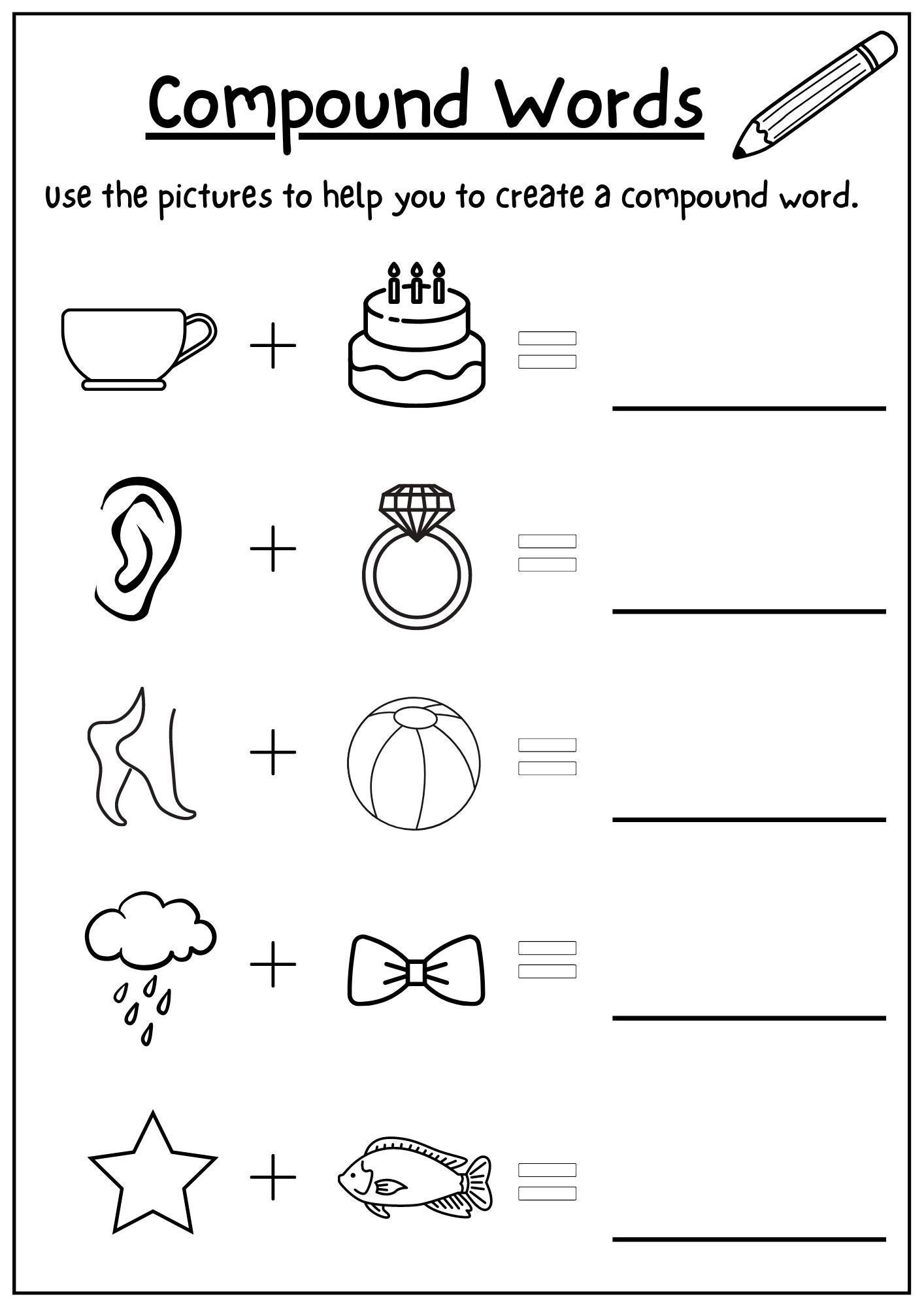
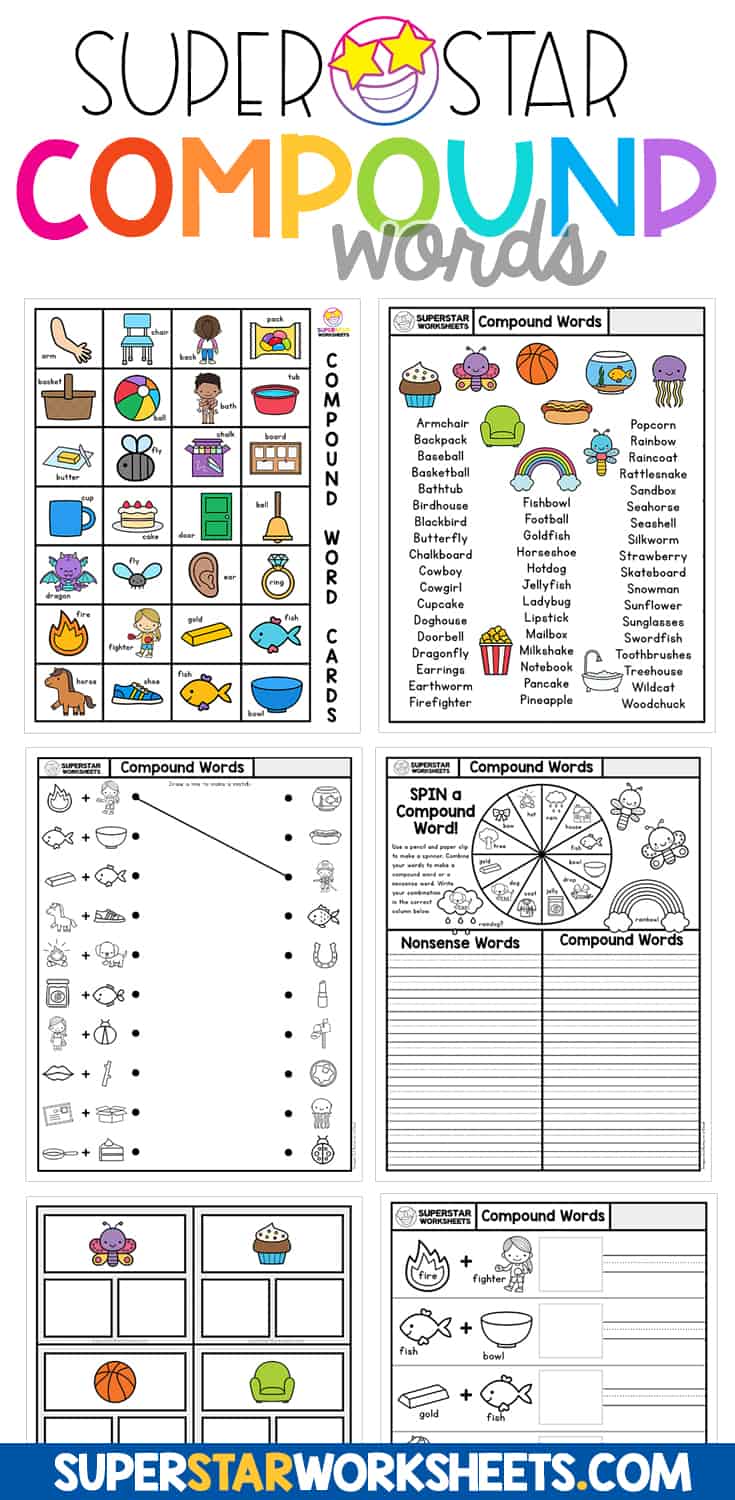
Understanding these distinctions is vital for comprehensive language development, and well-designed worksheets can guide learners through each type progressively.
Why Compound Words Matter: Beyond Just Vocabulary
The significance of teaching compound words extends far beyond simply adding new terms to a learner’s lexicon. Their mastery contributes to several critical areas of language proficiency:

- Vocabulary Expansion: Directly, learning compound words introduces a vast array of new terms, enriching a learner’s vocabulary.
- Reading Comprehension: When readers encounter compound words, knowing how they are formed can help them decode unfamiliar words and infer their meanings, thus improving overall reading comprehension.
- Spelling Skills: Understanding that two familiar words combine to form a new one can significantly aid in spelling, as learners can break down complex words into their simpler components.
- Writing Fluency and Precision: A strong grasp of compound words allows writers to choose more precise and concise language, improving the clarity and sophistication of their written expression.
- Understanding Word Structure: Learning about compound words helps students grasp the morphological structure of English, teaching them how words are built and how their meanings can be altered or created by combining different parts. This foundational understanding can later assist in learning prefixes, suffixes, and root words.
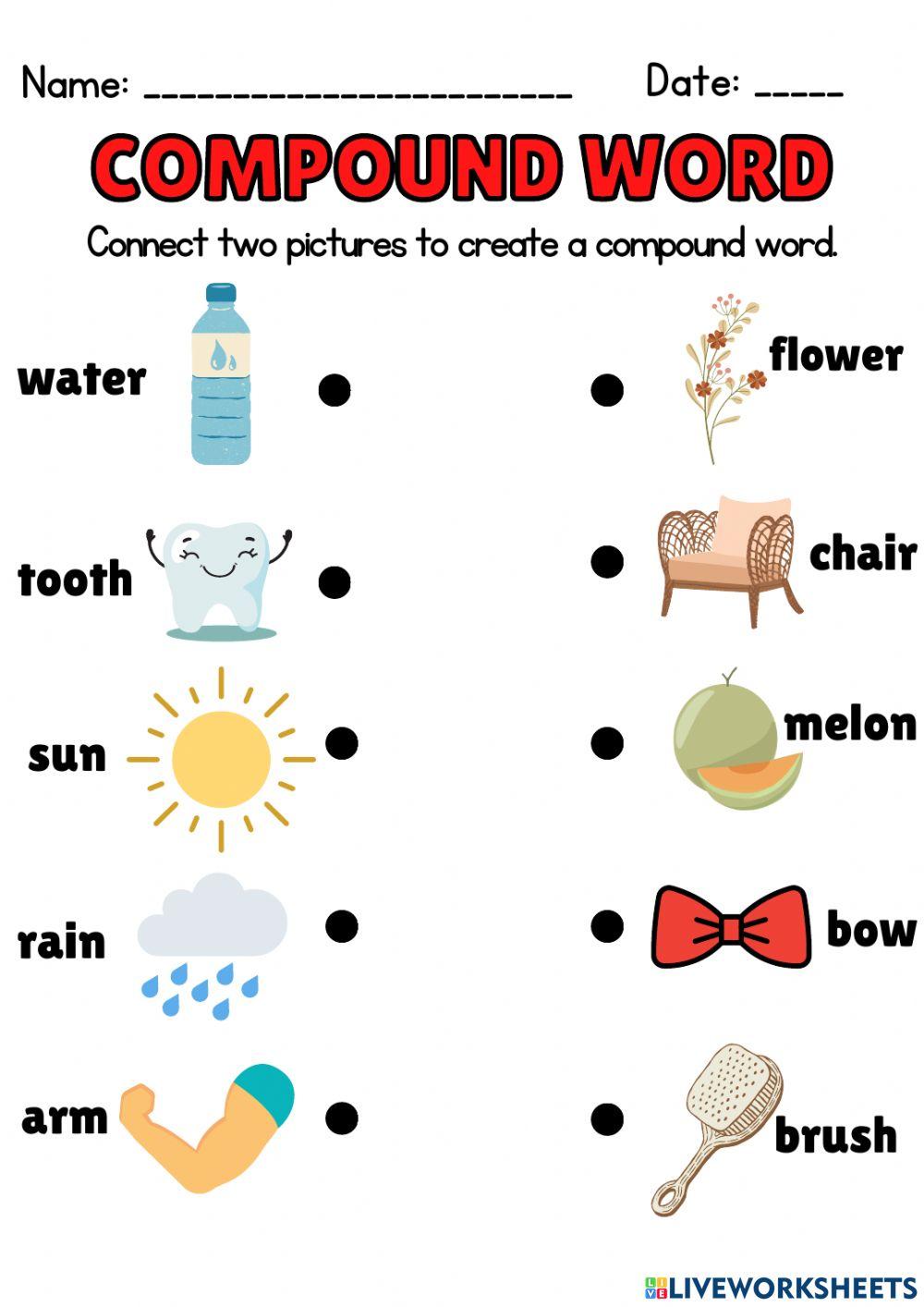
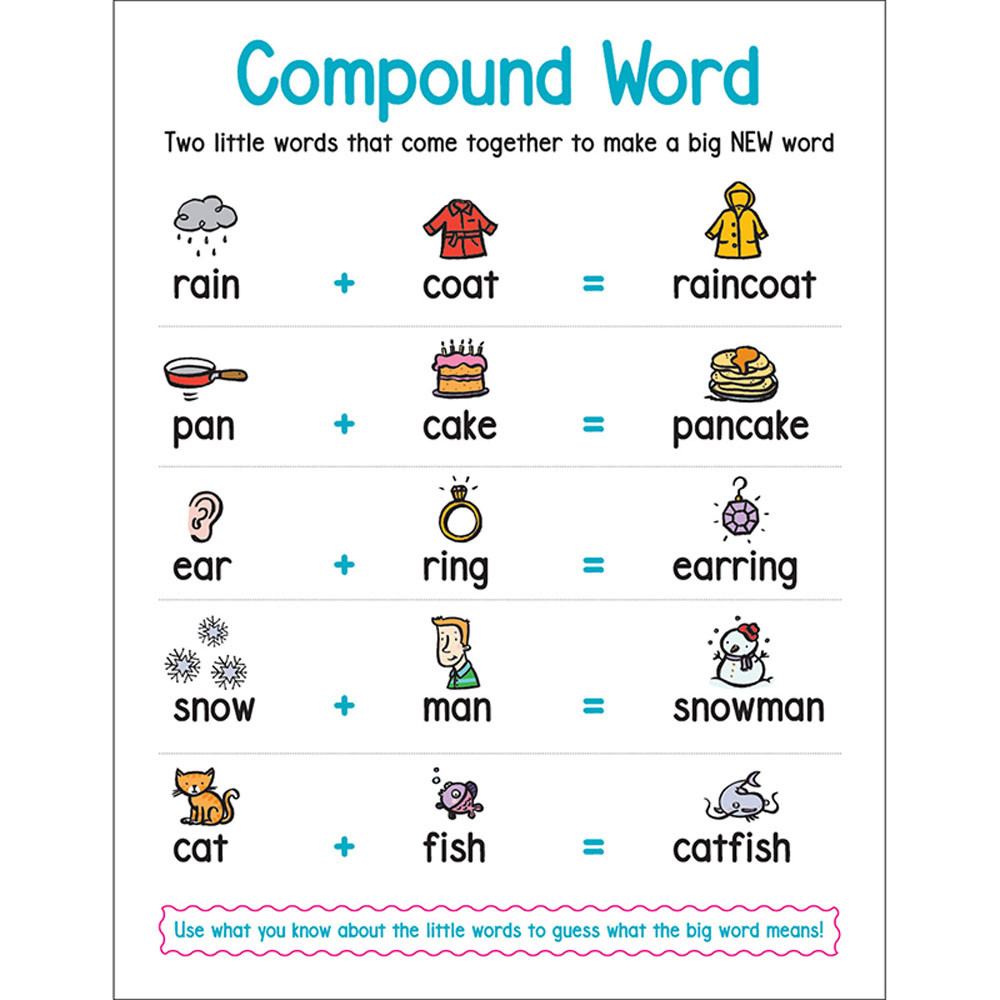

Given these profound benefits, it becomes clear that dedicated instructional strategies are necessary. This is precisely where compound words worksheets shine as an effective pedagogical tool.
The Power of Practice: Why Utilize Compound Words Worksheets?
A well-designed set of compound words worksheets can transform this learning process from a daunting task into an engaging and effective journey. Here’s why they are so indispensable:
- Structured Practice: Worksheets provide a systematic way for learners to practice identifying, forming, and using compound words. They guide students through various exercises, ensuring comprehensive coverage of the concept.
- Reinforcement: Repetition is key to mastery. Worksheets offer ample opportunities for repeated exposure and practice, solidifying the understanding of how words combine and what meanings they create.
- Assessment Tool: For educators, worksheets serve as an excellent informal assessment tool. They allow teachers to quickly gauge student understanding, identify areas where learners might be struggling, and tailor future instruction accordingly.
- Variety of Activities: Good worksheets don’t just ask students to list compound words. They incorporate diverse activities that cater to different learning styles, keeping students engaged and challenging them in multiple ways.
- Independent Learning: Worksheets are ideal for independent practice, allowing students to work at their own pace. This fosters self-reliance and gives teachers time to provide individualized support to those who need it most.
- Differentiated Instruction: Worksheets can easily be differentiated to meet the needs of diverse learners. Simpler worksheets can be provided for beginners, while more complex ones can challenge advanced students.
Types of Engaging Compound Words Worksheets
The effectiveness of compound words worksheets lies in the variety of activities they offer. Here are some popular and highly effective types of exercises:
-
Matching Activities:
- Word-to-Word Matching: Students match two individual words (e.g., "sun" and "flower") to form a compound word.
- Picture-to-Word Matching: Students match a picture (e.g., a "toothbrush") to its corresponding compound word.
- Definition-to-Word Matching: Students match a definition (e.g., "a room where you sleep") to the correct compound word ("bedroom").
-
Combining Words:
- Build-a-Word: Given two separate words (e.g., "rain" + "bow"), students write the resulting compound word ("rainbow"). This is fundamental for understanding the formation process.
- Sentence Completion with Combining: Students are given a sentence with two words in parentheses that need to be combined to form a compound word to complete the sentence (e.g., "I saw a beautiful (butter) (fly) in the garden.").
-
Breaking Apart Compound Words:
- Deconstruction: Students are given a compound word (e.g., "bookmark") and asked to write the two individual words that form it ("book" + "mark"). This reinforces the understanding of word components.
- Word Sort: Students sort a list of words into "compound words" and "not compound words," or sort compound words into their two component parts.
-
Fill-in-the-Blanks:
- Contextual Use: Students complete sentences using appropriate compound words from a word bank, demonstrating their understanding of the words’ meanings in context.
- Creating Compound Words in Context: Sentences have blanks where students must create a suitable compound word based on the sentence’s meaning (e.g., "The __ was filled with students during recess." – possible answer: "playground").
-
Sentence Writing:
- Using Given Compound Words: Students write original sentences using a list of provided compound words. This encourages creative thinking and reinforces meaning.
- Compound Word Story: Students write a short story or paragraph incorporating a minimum number of compound words.
-
Word Search and Crossword Puzzles:
- These are engaging and fun ways for students to identify compound words within a larger grid of letters or to deduce them from clues. They are excellent for reinforcing spelling and recognition.
-
Categorization/Sorting Activities:
- Students sort compound words based on their type (closed, hyphenated, open), or based on a theme (e.g., compound words related to nature, school, or home).
Designing and Selecting Effective Compound Words Worksheets
When selecting or creating compound words worksheets, consider these key factors to maximize their educational impact:
- Age Appropriateness: Ensure the vocabulary and complexity of the tasks match the learners’ developmental stage. Younger learners might start with simple closed compound words with clear picture cues, while older students can tackle hyphenated and open compounds, along with more abstract concepts.
- Clear Instructions: Worksheets should have concise and easy-to-understand instructions to minimize confusion and allow for independent work.
- Engaging Visuals: Especially for younger learners, colorful and relevant illustrations can make worksheets more appealing and aid in comprehension.
- Varied Activities: As discussed, a mix of matching, combining, breaking apart, and contextual use activities keeps students engaged and provides a holistic learning experience.
- Scaffolding: Introduce concepts gradually. Start with simpler tasks and progressively move to more challenging ones. For example, begin with matching picture parts, then move to combining words, and finally to using them in sentences.
- Answer Keys: Including an answer key allows for self-correction and reduces the teacher’s grading load, making the learning process more efficient.
Integrating Worksheets into Your Teaching Strategy
Worksheets are most effective when integrated into a broader language arts curriculum. Here are some ways to use them strategically:
- Introduction: Use a worksheet as a diagnostic tool at the beginning of a unit to assess prior knowledge.
- Guided Practice: Complete a worksheet together as a class, discussing the answers and the reasoning behind them.
- Independent Practice: Assign worksheets for individual work in class or as homework to reinforce concepts taught.
- Review and Reinforcement: Use worksheets as warm-up activities, exit tickets, or during review sessions before an assessment.
- Differentiation: Provide different levels of worksheets to cater to the varying needs and abilities within your classroom.
- Learning Centers: Incorporate worksheets into literacy centers where students can work independently or in small groups.
Beyond the Page: Maximizing Learning
While compound words worksheets are incredibly valuable, remember that they are just one tool in a comprehensive language learning approach. Supplement their use with:
- Interactive Games: Online games, board games, or classroom activities that involve building or identifying compound words.
- Read Alouds: Point out compound words in books you are reading aloud and discuss their meanings.
- Real-World Application: Encourage students to find compound words in everyday life (e.g., street signs, product labels, newspaper headlines).
- Discussions: Engage students in conversations about how compound words are formed and how their meanings relate to their component parts.
Conclusion
The journey to linguistic mastery is significantly aided by the strategic use of compound words worksheets. These structured, versatile, and engaging tools provide the necessary practice for learners to confidently identify, form, and utilize compound words. By integrating a variety of worksheet activities into a well-rounded language arts program, educators can empower students to expand their vocabulary, enhance their reading comprehension, sharpen their spelling skills, and become more proficient and precise communicators. Embracing the use of these invaluable resources will undoubtedly lay a strong foundation for lifelong literacy.
